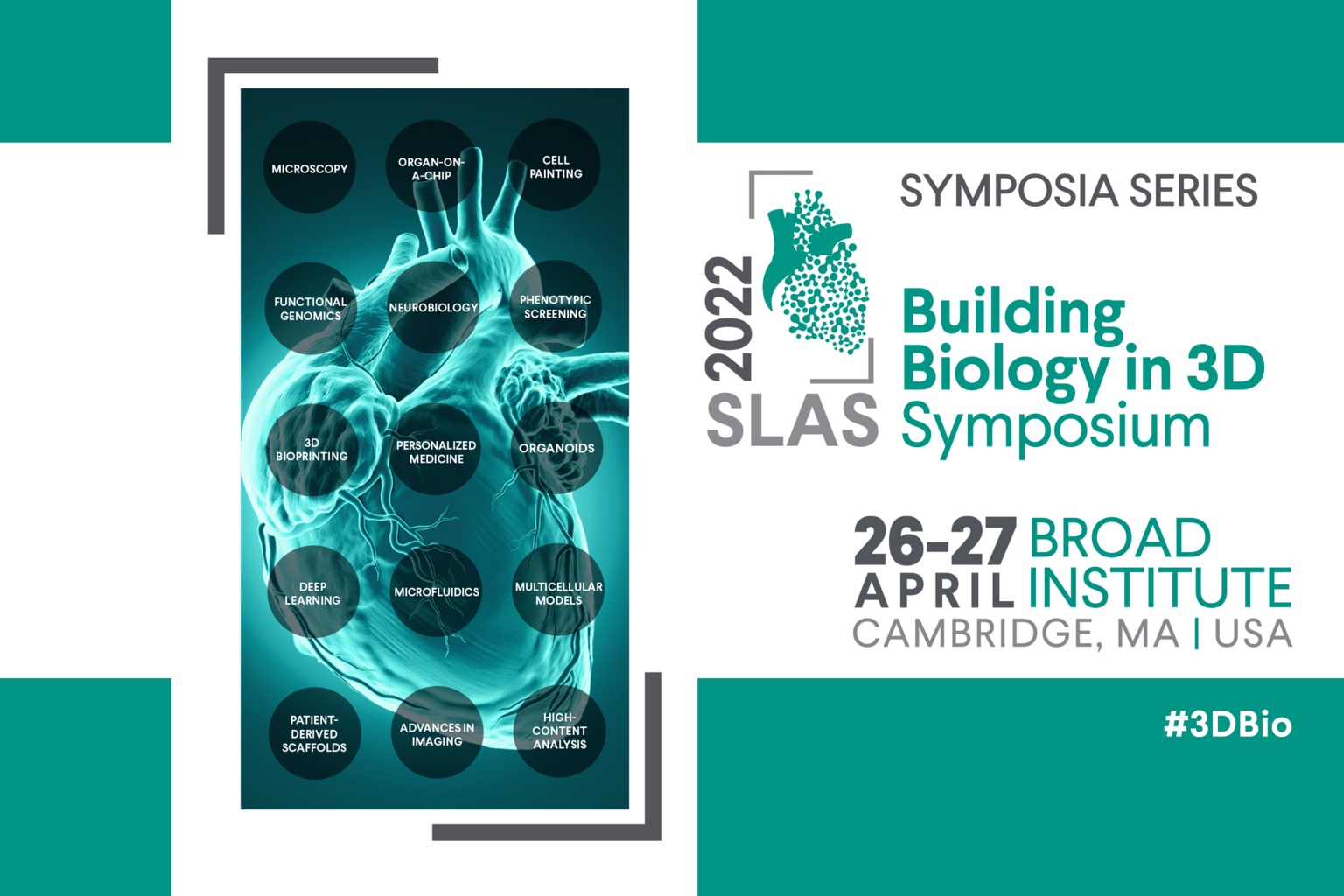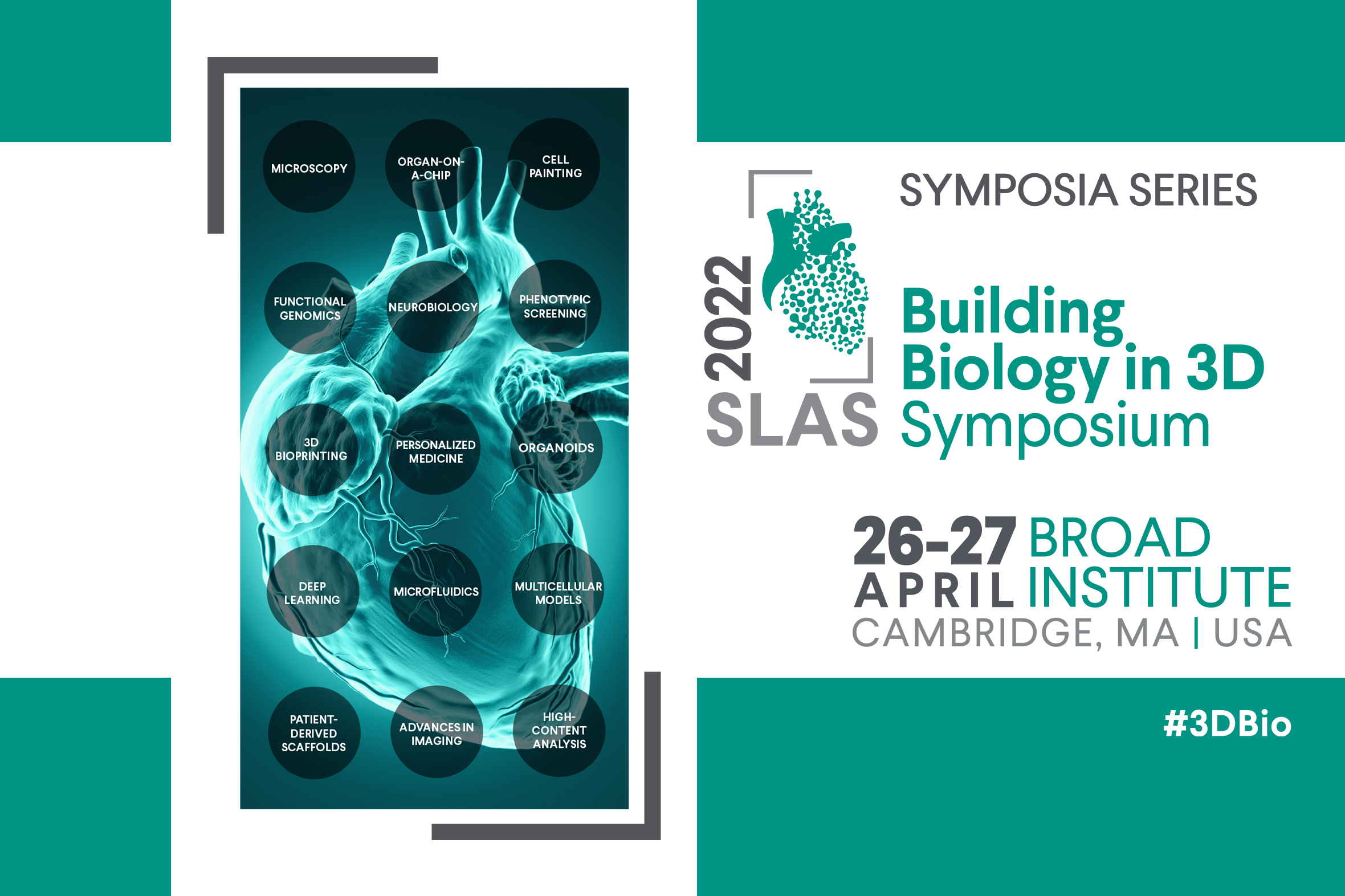April 26-27, 2022
Boston, MA, USA


April 26-27, 2022
Boston, MA, USA
This year's program will include the following sessions. Additional sessions and speakers will be added as they become final. For an event timeline, visit the Schedule at a Glance.
Nathan Coussens, Ph.D. (Frederick National Laboratory for Cancer Research)
Chair: Jessica McClure (MaxCyte, Inc.)
This session centers on innovations in 3D culture enabling technologies. New functional and biology-inspired interfaces and polymer networks and their impact on 3D culture are presented. Speakers will discuss how phase transition and its utility as a tool in synthetic biology can create artificially high concentrations of enzymes and substrates via coacervation. Recent developments in synthetic, natural hydrogels and matrix free technologies for embedding 3D cultures will also be addressed including its scalability for larger applications. Finally, state-of-the-art organ-on-chip platforms are presented and their application perspective relative to 3D culture systems will also be covered.
Speakers
Katia Karalis, Ph.D. (Regeneron)
Shannon Mumenthaler, Ph.D. (The Lawrence J. Ellison Institute for Transformative Medicine of USC)
Capturing Biological Complexity in a Tumor-on-a-Chip Model
The highly complex and evolving nature of cancer makes it challenging to study. Here we describe a microfluidic organ-on-chip platform, incorporating tissue-tissue interfaces and physical forces, to support novel interrogations of colorectal cancer progression. We will cover advancements made through combining organ-on-chip models with high content imaging and mass spectrometry-based metabolomics to provide measurements that capture spatial and temporal dynamics. This work reveals important interactions between colorectal cancer cells and their microenvironment, which can be used to prevent or delay cancer progression.
Nila C. Wu, Ph.D. Candidate (University of Toronto)
3D Microgels to Quantify Tumor Cell Properties and Therapy Response Dynamics
Tumors contain heterogeneous and dynamic populations of cells that cannot all be targeted by traditional chemotherapies. There is a need therefore, to develop novel treatment strategies that target diverse tumor cell properties. Identifying successful strategies is challenging however, as current approaches have relied on unrepresentative culture models, such as cell line monolayers, and with treatment response being assessed using whole-well, endpoint assays that do not capture tumor heterogeneity or the reactive nature of the disease. Here, we report an in vitro culture platform using micro-molded hydrogels (microgels), the Gels for Live Analysis of Compartmentalized Environments (GLAnCE) platform in a 96-well plate format (96-GLAnCE), to address these limitations.
Chair: Glauco Souza, Ph.D. (Greiner Bio-One North America)
This session will explore the use of microphysiologically relevant 3D cell culture models in high-throughput and high-content screening platforms, including the development of novel technologies towards more accurate and predictive outcomes in drug screening and target identification.
Speakers
Fabio Stossi, Ph.D. (Baylor College of Medicine)
Imaging Estrogen Receptors Activity and Development of Single Cell Quality Control Pipelines
Tim Spicer, Ph.D. (Scripps Research - Florida)
Nicholas Geisse, Ph.D. (Curi Bio)
Modeling Contractile Diseases Using Scalable 3D Engineered Muscle Tissues for Drug Discovery
Model systems that accurately recapitulate healthy and diseased function in a dish are critical for the development of novel therapeutics. For cardiac and skeletal muscle diseases, direct assessment of contractile output constitutes the most reliable metric with which to assess overall tissue function, as other ‘proxy’ measurements are poor predictors of muscle strength. 3D engineered muscle tissues (EMTs) derived from iPSCs hold great potential for modeling contractile function. However, the bioengineering strategies required to generate these predictive models are oftentimes out of reach for most investigators. Here, we have developed an automation-friendly platform and device that utilizes 3D EMTs in conjunction with a label-free magnetic sensing array.
Chair: Ross Lagoy, Ph.D. (Element Biosciences)
In this session, world renowned experts will discuss revolutionary imaging technologies, advanced analysis approaches and the biological phenomenon that was impossible to see before their innovations. The speakers will also explore how artificial intelligence and machine learning techniques are being developed and elegantly applied to quickly handle, analyze and interpret these complex volumetric data sets and how these new approaches will continue to illuminate disruptive discoveries in science and medicine.
Speakers
Hari Shroff, Ph.D. (National Institute of Biomedical Imaging and Bioengineering)
Enhancing Flourescence Microscopy with Computation
Biomedical optical microscopy is undergoing a renaissance in performance, with better resolution, depth penetration, and speed than ever before. In this talk, I will discuss further improvements that decrease phototoxicity, improve resolution, and extend depth – by leveraging deep learning. Examples from challenging developmental systems, including late-stage C. elegans embryogenesis, will be highlighted.
Jason Yim, Ph.D. Student (Massachusetts Institute of Technology)
Artificial Intelligence to Predict Eye Disease from 3D Ocular Images
Artificial intelligence (AI) through deep learning has made tremendous progress in building automated systems for understanding complex, structured data. This is fortunate because as medical imaging modalities become more advanced, so does the data they generate; to the point where humans cannot be relied on to make critical decisions when we cannot fully understand the data. In this talk, I will discuss one such instance of attempting to use AI for understanding complex 3D data and decision making based on our recent work "Predicting conversion to wet age-related macular degeneration using deep learning". I will discuss challenges and methods of building AI-based learning systems on real life clinical data.
Allysa Stern, Ph.D. (Cell Microsystems)
Image, Identify, and Isolate Single Organoids with CellRaft AIR Systems
Organoids are valuable multi-cellular 3D tissues that are gaining traction in research and drug discovery pipelines due to their ability to accurately model the cellular structure, complexity, and pathophysiology of in vivo organs. However, traditional culture methods of organoids present challenges in imaging and analysis of heterogenous organoid populations, including multifocal imaging requirements due to overlapping structures and unreliable imaging over time, which makes monitoring phenotypic changes of individual structures difficult. The 3D CytoSort® Array and CellRaft AIR® System are uniquely suited to address these challenges and provide a one instrument solution for imaging, analysis, and retrieval of single, intact organoids for downstream applications.
Chair: Herve Tiriac, Ph.D. (University of California, San Diego Moores Cancer Center)
With rapid advances in three-dimensional (3D) culture methods, scientists have modeled many complex human diseases in a dish. Cultures can incorporate both disease cells as well as key microenvironmental compartments. These patient-derived translational models are amenable to phenotypic screening thus enabling scientists to empirically identify effective therapeutic options and novel biomarkers ex-vivo. Early results suggest that findings in 3D models translate to patient outcomes. In this session, attendees will hear from experts who are optimizing robust platforms to empower clinicians and patients to take advantage of complex 3D translational models.
Speakers
Linda Griffith (Massachusetts Institute of Technology)
Ameen Salahudeen, Ph.D. (Tempus)
Betty Li (Saguaro Technologies)
Development of New Dyes to Probe Cell Physiology of 3D Cultures in High-Content Screening
High-content imaging approaches, in combination with the use of perturbing agents such as small molecules or CRISPR-driven gene edition, have helped identify new therapeutic compounds (1). Together with recent advances in image-analysis methods (2), the use of high-content screens is accelerating and therefore making it easier to identify such compounds. However, large-scale high-content screens have yet to be widely adopted due to the lack of suitable probes especially with 3D structures. Here we present novel fluorescent non-toxic dyes that display color and pattern changes in response to different physiological states and cellular types. Their multi-week non-toxicity make them uniquely ideal to stain 3D cultures and compatible with large-scale screens. The rich information they provide facilitate unbiased quantitative phenotypic analysis at larger scale, and ultimately help pave the way for more discoveries of new therapeutic agents.
Hans Clevers, Ph.D. (Roche)
Organoids to Model Human Diseases